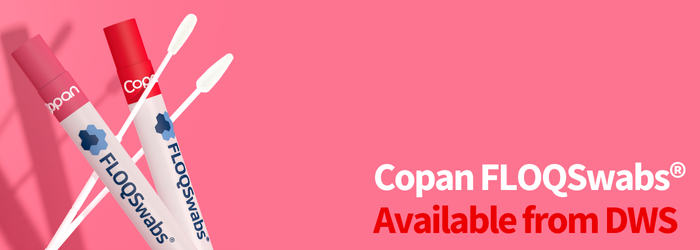
This article investigates how different aspects of vaginal self-collection (SC) workflows affect the performance of HPV testing for cervical cancer screening. As SC gains traction in public health efforts to reach under-screened women, optimising the sample collection and handling process becomes crucial to maintain diagnostic accuracy.
Methodology
The empirical testing utilised Copan FLOQSwab® - a customisable moulded plastic shaft and a tip coated with perpendicular short Nylon® fibres, specifically designed for efficient cell uptake and release. These were used for vaginal SC and to assess the impact of, resuspension volume, swab handling method (swirl-and-toss vs. direct deposit) and media type (lytic vs. fixative).
Three experiments were conducted:
- Swirl-and-toss vs. swab deposition into 10 mL BD SurePath™.
- Comparison of swab deposition into 3 mL lytic buffer vs. swirl-and-toss into 5 mL PreservCyt.
- Comparison of all methods above to clinician-collected (CC) samples.
All samples were analysed using the BD Onclarity™ HPV assay, measuring cell recovery via beta-globin Ct values.
Key Findings
1. Swab Deposition Recovers More Target Material
- Depositing the Copan FLOQSwab® directly into media (vs. swirl-and-toss) improved cell recovery by approx. 2-fold, as shown by a 1 Ct reduction.
- In another setup, deposition into 3 mL lytic buffer yielded 16 times higher cell recovery than swirl-and-toss into 5 mL PreservCyt.
2. Lower Resuspension Volumes Improve HPV Detection
- Reducing the resuspension volume from 10 mL to 3 mL resulted in an additional 2.6 Ct reduction, equating to a 6-fold improvement in target recovery.
- This demonstrates that large volumes (designed for cytology, not molecular testing) dilute the analyte and reduce test sensitivity.
3. Direct Deposit in Lytic Media Outperforms Standard CC Methods
- Surprisingly, 3 mL FLOQSwab® direct deposit samples outperformed CC samples in 10 mL SurePath by 2 Ct (~4-fold cell recovery advantage).
Meta-analysis Results
A systematic review of 17 studies comparing SC and CC confirmed:
- When SC-to-CC resuspension volume ratio was <1.0, relative sensitivity for detecting ≥CIN2 increased to 97%, compared to 92% when the ratio was ≥1.0.
- Specificity remained high across the board (94 - 98%).
This confirms that smaller resuspension volumes optimise clinical performance and reinforce the findings of the empirical study.
Why FLOQSwabs® are Ideal for HPV SC
- Superior sample elution: FLOQSwabs® have no internal core to trap the sample, allowing rapid adsorption and ensuring fast and complete specimen elution.
- Designed for dry transport: Ideal for self-collection kits, especially in community or home-use settings.
- Compatible with lytic media: Enhances viral DNA release for highly sensitive HPV detection via PCR.
- Validated in high-performance workflows: This study's best-performing setup - FLOQSwab® directly deposited in 3 mL of lytic buffer - sets a new benchmark for self-collection methods.
Summary
This study supports a paradigm shift in cervical screening: SC vaginal samples can match or exceed clinician-collected samples when workflows are optimised. Central to this is the use of Copan FLOQSwabs®, which maximise target recovery and maintain sample integrity. For national screening programmes and diagnostic labs looking to expand reach and maintain accuracy, the message is clear: pairing the right swab with the right media matters.
For more information on Copan Swabs head over to our website, or check out our eShop to put an order in: Sample Collection Devices | Don Whitley Scientific
Paper available on our database:
Vaughan, L., Gary, D., Shah, M., Lewellen, L., Galbraith, L., & Parvu, V. (2024). Variables that impact HPV test accuracy during vaginal self collection workflow for cervical cancer screening. Gynecologic Oncology Reports, 54, 101421.


 en
en


 English
English